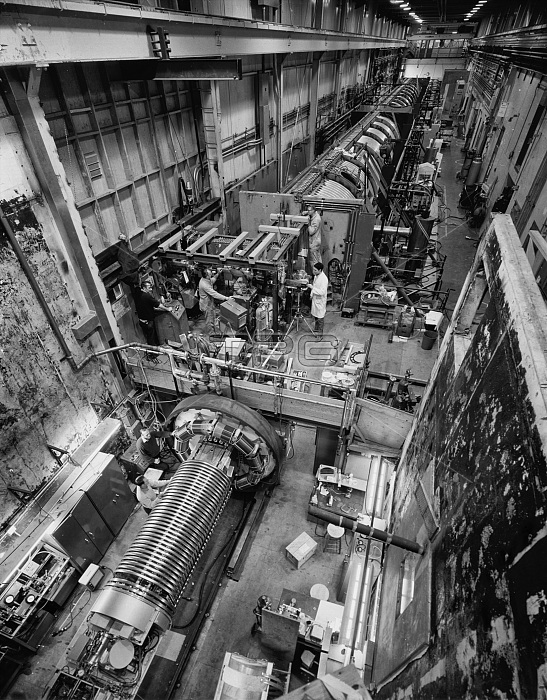
Overall view of the Super-HILAC, successor to the HILAC, accelerates beams of heavy ions. The Super-HILAC, which stands for Super Heavy Ion Linear Accelerator, began its career in 1972 was built from the remains of an older accelerator the HILAC which was built in 1957. A heavy ion is a charged atom with two or more protons in its nucleus, which means every element on the periodic table from helium on up. The HILAC was one of the first machines that could accelerate elements as heavy as argon (atomic mass of 40) to atom-smashing energies. The Super-HILAC could accelerate all the natural elements including the heaviest, uranium, to such energies. This opened the door to the creation of synthetic elements beyond uranium, also known as transuranic elements. In 1974, the Super-HILAC had itself become a sometime injector for the Bevatron, Berkeley Lab's huge synchrotron. When operating in tandem, the two accelerators were known as the Bevalac. With the addition of Abel to the Super-HILAC, the Bevalac became the only facility in the world that could bombard targets with highly energized uranium ions. On December 23, 1993, the Super-HILAC was turned off for the last time.
| px | px | dpi | = | cm | x | cm | = | MB |
Details
Creative#:
TOP22170509
Source:
達志影像
Authorization Type:
RM
Release Information:
須由TPG 完整授權
Model Release:
N/A
Property Release:
No
Right to Privacy:
No
Same folder images:

 Loading
Loading